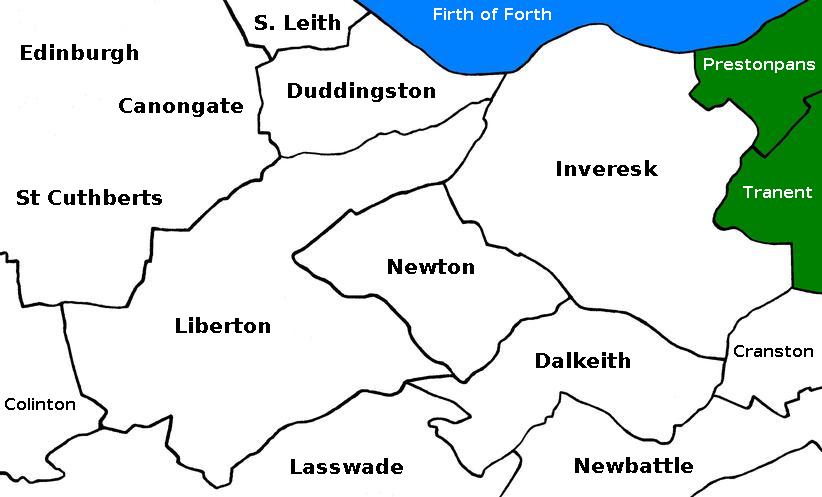Catherine Banks
by Ray L Nelson
Pictures and documents added by Lois C. Berrett
Catherine is my Great Great Great Gramdmother
Was born on Thursday the 26th of September 1793 in
Huntershall, Liberton parish, Midlothian, Scotland. The daughter of John Banks
and Catherine Flucker. They were colliers.
On a beautiful Friday afternoon, the 10th of June 1814
Catherine married Edward Neilson, after the banns of the Church of Scotland.
And like their forebearers before them they were soon toiling together to
remove coal from the pits and raise a family. Their first born, Mary died
before her first birthday and later a son, Ramsey, died only a few months old.
Nevertheless, by the 1820s they were a thriving family of colliers. Their youngest
son, Edward Banks was born in 1830.
Catherine worked in the mines as a bearer. The system worked
something like this. Edward was a coalhewer. He worked at the coalface and
hewed the coal into pieces to be removed from the mine. Every hewer had a
bearer. Most of the bearers were women. The bearer's job was to haul the coal
pieces from the coalface to the surface. The bearers carried the coal in creels
(made of soft woven material like a basket) on their backs and each creel was
held in place by the means of a strap that went around the woman's head. She
then hung a small metal lantern from the strap across her forehead (these were
small open flame oil lamps) and this was the only light she had. She carried
the creel weighing as much as 180 lbs. and routinely more than 100 lbs. through
the mine, scaling ladders to get from one level to another and often moving
through spaces knee deep in water with three feet of head room.
These mines reached depths of 300 feet in Catherine's day.
Depending on the depth they were working Catherine made 6 to 10 trips per day
in the above manner. Edward and Catherine, hewer and bearer worked together as
a team and were paid by the weight of coal that they delivered to the surface.
Siblings at the mine entrance tended her children, where
Catherine could check on them periodically as she made her rounds down into the
mine. At age seven the children were expected to help out by sorting the coal
to size as it was brought out of the mine and by age twelve they began working
in the pits as bearers and helpers. By their teen years they were fully engaged
at mining. Typically they worked twelve hours in the pits six days a week.
Before 1843 they were not educated and mostly illiterate.
Still despite what seems to us to be a dismal lot, they were
fiercely proud of their collier status and they lived and worked in a tight nit
community. They lived together in row houses at or near the mine entrance. They
controlled everything that went on in those mines in a highly developed system,
which is still inherent in coal mining today. They were frugal beyond any
measure that remains with us. They often were deeply religious people, although
they had a reputation among folks with higher social status for their fighting
and cursing. They were at the bottom of the Scottish social and economic
ladder.
In 1822-25 and again in 1836-38, just as Catherine and
Edward were raising their family there were deep economic depressions. This
caused many of the mine owners (Scottish Lairds) to cut the wages in the pits
forcing the colliers to change jobs or starve. They were free finally but only
had choices when faced with starvation in harsh economic times. We know that
they moved first, from Huntershall, Liberton back into Duddingston Parish to
Joppa, where they may have been employed in the salt works. And then east into
the Parish of Inveresk, first at Wallyford and finally Westpans.
By 1840 when the Twelve Apostles and the first missionaries
of the Restoration came to Great Britain these colliers were just into changing
jobs, going from mine to mine often, seeking better conditions and wages and
finally realizing what freedom could mean to them. The coincidence is striking.
Catherine and Edward's children joined the church in 1847, which they heard
about in street meetings. The very first baptism in the Neilson family was in
June and all had joined the Church by October.
There is no record of Edward joining the Church, in fact
there is no evidence that he survived to 1847. In the absence of any record,
most genealogists have estimated his death about 1855. There is no record of
Catherine's death but we know that Edward married Margaret O'Neal which places
Catherine's death between the birth of her youngest son Edward Banks, and the
marriage. Most genealogists use the estimated date of 1833. What was recorded
is that, after immigrating, her children performed vicarious ordinances for
both Catherine and Edward at very early dates. Interestingly Catherine's LDS
ordinances were performed by her children earlier than Edwards.
Few of us have toiled in our life as Catherine surely did.
















